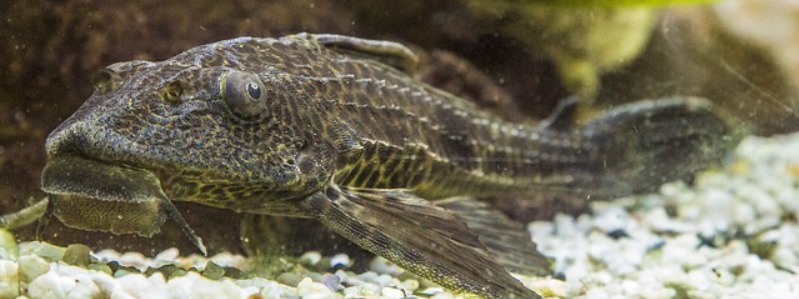The list of types of catfish in Texas and interesting information to know about them.
Contents
- The list of types of catfish in Texas and interesting information to know about them.
- Types Of Catfish In Texas
As you probably already know by now Texas, due to its unique geographical location, as well as embracing climate, is teeming with life. This is true both on the land side as well as the water habitat. In this article we want to look at a particularly interesting species of fish; the catfish.
Let us start with a proper definition of what the catfish is. A catfish is any member of a broad family of fish that share the common characteristic of having barbs that resemble whiskers around its mouth. Catfish are remarkably hardy fish, known for surviving very harsh conditions, and are generally bottom dwellers, preferring to stay out of sight.
Okay, so now we have what we can call a general description of what a catfish is, and looks like. The next question is: ‘what types of catfish can we find in Texas?’ We answer that in the paragraphs below.
Types Of Catfish In Texas
-
1. Catfish With Deeply-Forked Tail and Also Have Snout Whiskers
In this particular category, we have the Channel Catfish, and also the Blue Catfish. Without wasting time, let us get to their defining features, as well as how to distinguish between them.
-
-
1a. Channel Catfish
-
The anal fin of the channel catfish typically has 24-29 rays including rudiments with its free margins looking like they are more or less rounded. Rays are soft rod-like structures that support the fin membranes and extend all the way from the body proper to the fin tips. Similar spots are found on the bodies of young channel catfish but are lost at adulthood. Adult channel catfish, especially the males of the species, have an enlargement of the head during the spawning season, which gives them an unusual appearance. The enlargement may make them more attractive to potential mates. The Channel catfish is the smaller of the two species; 30 pounds is the recorded maximum, while a specimen of 10 pounds is considered large.
-
-
1b. Blue Catfish
-
The anal fin of the Blue Catfish has 30 to 35 rays with the rudiments, its free margin nearly straight. But apart from the anal fins; The blue catfish has a generally straight profile from the top fin to the top lip. The Blue Catfish also has spots that are present on its sides. Sizes: The maximum recorded size for the Blue Catfish is 150 pounds; A specimen that is 25-50 pounds is considered large, while a specimen that weighs up to 15 pounds is regarded as common.
-
2. Catfish Species that have Deeply-Forked Tails and No Snoutwhiskers
In this particular category, we have two distinguished members, and they are the Gafftop Catfish, and the Sea ( or Hardhead) Catfish.
Let us now consider some of the characteristics that distinguish the two species we have mentioned.
-
-
2a. The Gafftop Catfish
-
This species has one pair of whiskers on the chin. Its upper lip whiskers, top-fin tip, and front side-fin tip are prolonged and prominent. The Gafftop catfish live in marine and brackish waters. It can survive in either environment and can even alternate the living conditions. Gafftop Catfish that weigh up to 2 pounds are regarded as common, while 5 pounds is the recorded maximum.
-
-
2b. The Sea Catfish
-
The sea catfish has a deeply forked tail just like its cousin the Gaftop, but you can distinguish this species because it lacks exceptionally prolonged upper lip whiskers and fin tips and by the presence of two pairs of chin whiskers, as against the one pair belonging to the Gafftop. The sea catfish also lives in the marine and brackish waters. As for size, specimens that are up to 1 pound are very common.
-
3. Catfish With Rounded Tail Fins or Tail fins that are Not Deeply Forked
In this category of types of catfish in Texas, we have quite a few members: Flathead, Black Bullhead, Yellow Bullhead, Tadpole Madtom, and Freckled Madtom. Let us now consider them one after another.
-
-
3a. The flathead
-
The Flathead Catfish has a protruding bottom lip. This species also has less than 16 rays in its anal fin. As the name implies, this species has a head that is very flat. The tail of young flat-head catfish has a visible whitish upper edge. The variety of names which have been applied to the Flathead catfish are many and have often caused some confusion. Among other names, this same fish is called a yellow cat and Opelousas (opp) catfish. As for size; the Flathead catfish are known to reach 100 pounds, and specimens that are 5 to 50 pounds are regarded as common.
-
-
3b. The Black Bullhead
-
The black bullhead has a slightly dented tail tip, and is distinguishable by chin whiskers are dark at all ages, and the tail-fin of this species is slightly notched. Anal fin rays number 17-24. Black Bullheads grow to about 4 pounds maximum, while specimens that are up to 2 pounds are regarded as common.
-
-
3c. The yellow bullhead
-
The Yellow Bullhead has whiskers that are white, except for slight coloration in older individuals. The tail-fin is evenly rounded. The anal fin of this species has rays that number 24-27. Size: This can be called small fish; 4 pounds is the maximum, while up to 2 pounds is regarded as common.
-
-
3d. The tadpole madtom
-
The Tadpole madtom has an adipose fin that is continuous with the tail fin. The Color of this species is generally a plain brown.
-
-
3c. The freckled madtom
-
This is a closely related species that also has a continuous adipose-tailfin but can be distinguished because it has dusky fins, and also because the fins have narrow pale margins. These species have body coloration is plain brown or brown with freckles on them. One important characteristic of Madtom catfishes is its small size. Both Madtoms of Texas are usually less than 2 inches as a maximum size, from mouth to tail tip.
Further Information: The description above highlights catfishes that one can expect to encounter in the waters of Texas. However, there are two rare, tiny catfishes that have recently been found in subterranean water in Bexar County. Furthermore; the eastern brown bullhead (which is not a native of Texas) has been recorded in the northeastern corner of Texas at Caddo Lake. Then again there is the Headwater catfish, which is a close relative of the channel catfish, and is well distributed in the upper Pecos River in New Mexico, has been noted range into Texas as it follows the flow of that river system. These catfish may be found in Texas but such an occurrence can best be described as accidents, with the probability of finding such fish being quite low.
Conclusion On The Types Of Catfish In Texas:
As you have seen in this article one of the most articulate ways of differentiating the different types of catfish is through observing the shapes of their tails. But since more than one catfish often have similar tail structures we can then look a little more closely, so as to take note of other features such as the number of whiskers, the number of rays on their anal fins, tail fin coloration and so on. For example, the blue, channel, and sea, as well as Gafftop catfishes all have distinct and deeply-forked tails. To distinguish them just look at their anal fins, note the number of rows that they have, then check their whiskers and you should be close to pinpointing the individual species.

